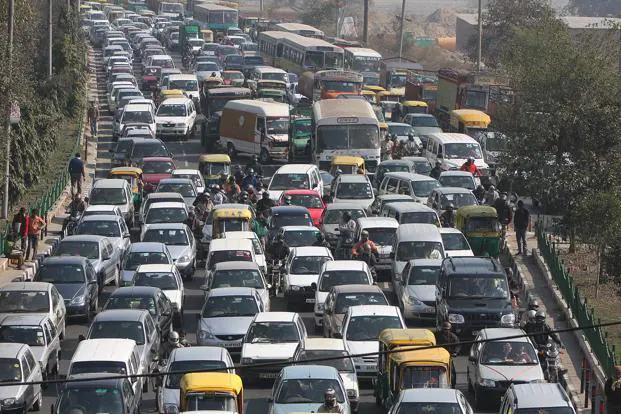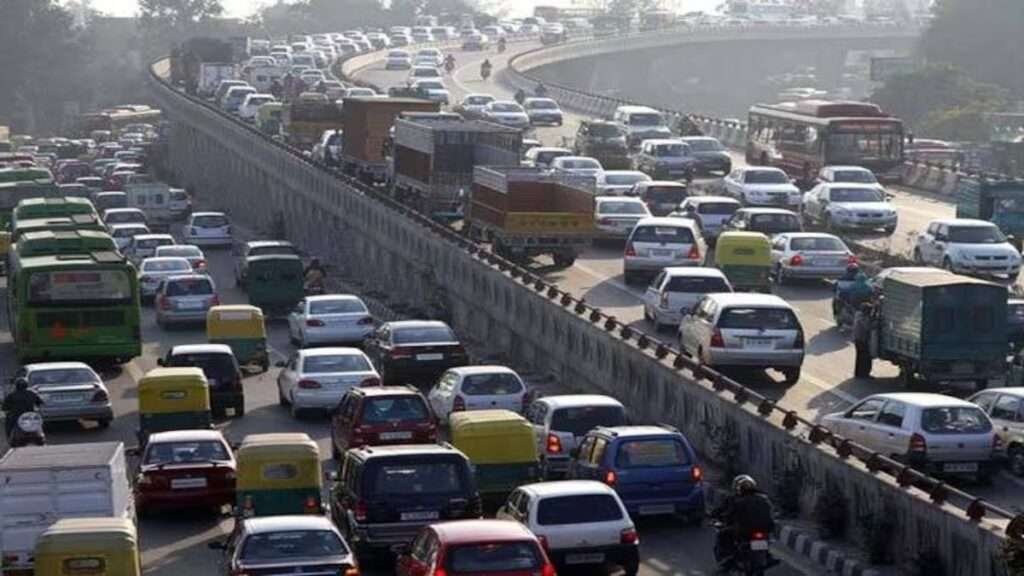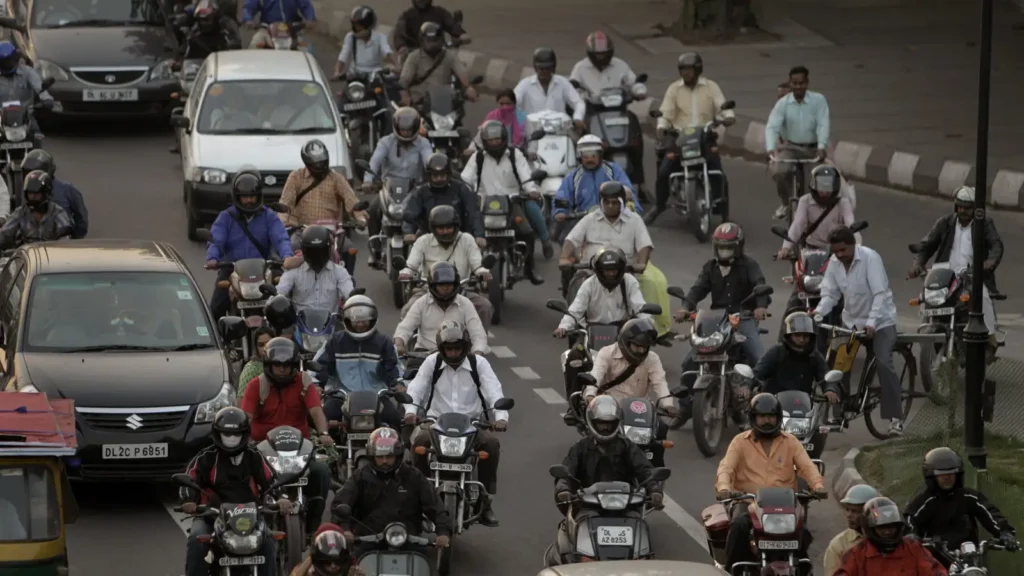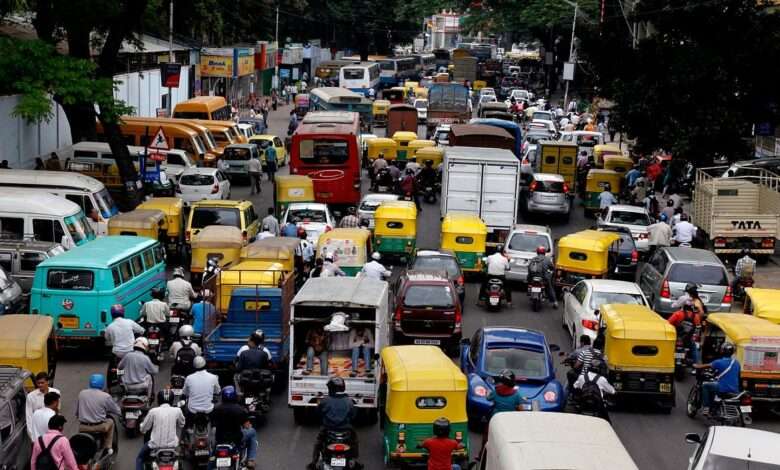Traffic Jams in Indian Cities Are Slowly Becoming a Deadly Threat to Public Health. How Many More Lives Will Be Lost Before India’s Urban Congestion Crisis is Taken Seriously?
Traffic jams are a growing problem and they are becoming common in cities everywhere. For India, the scenario would not be much different from that of major cities. The case of a 68-year-old man, Rajender Singh, who reportedly died of a suspected heart attack in his car on the Delhi-Jaipur highway, is not any other sad episode but a damp reminder of the silent but hugely lethal impact of urban congestion on lives.
On August 21, 2024, in the morning, Rajender Singh was on his way to Ambala for a business meeting. A routine drive ended up being his end when Singh got stuck in what seemed to be a hotel after a flyover-building mess near Bilaspur on the Delhi-Jaipur highway. He added the drizzle to his already dissatisfying life that morning. Singh suffered a heart attack and was subsequently discovered dead behind the wheel of his car. The police, among whom was Sub-Inspector Om Prakash, confirmed that Singh had died of a heart attack that may have been induced or compounded by prolonged stress and physical inactivity within the traffic jam.
Tragic incident: many questions are often raised about the safety and well-being of this increasing number of people getting entangled in the ever-worsening traffic conditions of Indian cities. It cannot be looked upon as an isolated event but part of a larger pattern in which the health impacts of traffic congestion are more and more witnessed.
It has been found that people who are stuck in traffic for long hours at a stretch are prone to acute stress, developing high blood pressure and becoming susceptible to heart attacks. A 2021 ICMR report disclosed that people who have had exposure to over two hours a day in traffic had a 60% higher chance of getting cardiovascular diseases.
Continuous jerking, coupled with breathing in vehicular pollution, disperses hazardous ambient conditions, drastically affecting the health conditions of those already suffering from some related problem. The burdensome experience of coming across heavy congestion, blaring horns, and generally unpredictable traffic can generate sudden stress reactions that lead to lost lives, as in the case of Rajender Singh.
The Cause of Trouble

Rapid urbanization in India has moved ahead with this country’s infrastructure, leading to bottlenecks in managing the traffic. Inadequacy in the transportation infrastructure of cities like Gurugram, which has rapid growth in population and vehicle ownership, is still using outdated road networks that are incapable of handling the tremendous volume of traffic. With no alternative transport system in place, like the most efficient public transit systems that exist in large numbers, people are forced to rely a lot on personal vehicles, further clogging the roads.
The Delhi-Jaipur highway, the site of the Singh killing, is an important arterial road that is congested throughout the day. Though it is a national highway, traffic congestion prevails, especially at industrial points similar to Bilaspur, where the incident occurred. This has been succeeded by ongoing road work, with the whole place engulfed in traffic mismanagement, which has converted this national highway into a commuter’s nightmare.
Urban Congestion
Urban traffic congestion is one of the prolific contributors to many forms of pollution, already documented, like air and noise. However, the health implications related to cardiovascular diseases never get counted much. The TomTom Traffic Index 2022 ranks Indian cities atop its list of the most congested urban traffic, with Bangalore being the second most traffic-captured city worldwide. To drive only 5 kilometers during peak hours takes about 18 minutes and 40 seconds. This is not an inconvenience; it is a potential health hazard.
Prolonged exposure to this vehicle emission due to traffic congestion contributes to respiratory and cardiac stress. Noise levels from continuous hooting and engine noise further increase the stress for people caught up in traffic, leading to hypertension and even heart attacks, as in the case of Rajender Singh.
Traffic in India is no longer a convenience issue but an epidemic public health issue. To illustrate, vehicular emissions were identified as the single largest source of air pollution in Delhi, accounting for 51% of the city’s pollution, according to a Centre for Science and Environment study conducted in 2022. That figure doesn’t even consider the dust generated by roads and construction, both tied to the extensive use of motor vehicles.
Noise pollution, another byproduct of this vehicular chaos, has reached unbearable levels. According to the United Nations Environment Programme, the cities of India are among the noisiest cities in the world; Muradabad in Uttar Pradesh is the second noisiest city in the world. Not only is this torture to the ears but also a severe health hazard, as excessive noise is stressful to the mind and body. It can also cause sleep disorientation and even raise blood pressure.
This oversimplifies a storyline that could only be solved using electric vehicles. Electric vehicles do nothing to solve the problem of tire and brake wear pollution, identified by a UK report in 2023 as the chief source of pollution caused by road transport. Just 15% of vehicular air pollution is from the tailpipe; the rest is from the wear and tear the vehicle causes to tires, brakes, and the road surface.
The situation becomes all the more different when the space cars occupy and take the city lane or parking space into consideration. According to the National Family Health Survey, NFHS-5, only 8% of Indian households own cars. And yet, that small percentage is choking our cities with their congestion. What chaos will be enacted if that number significantly grows? A car-centric attitude takes much more space per person than public transport, bicycles, or pedestrians, overfilling roads and almost pushing out from essential infrastructure places like parks and public spaces.
Furthermore, car dependency amplifies another urban problem: flooding. The increasing concretization of urban spaces, which is driven by the growing need for parking more and more vehicles, does not allow rain to permeate into the ground, which results in flooding in the urban areas, especially during the monsoon.
The most sobering aspect of India’s car culture is its deadly impact on road safety. According to the National Crime Records Bureau (NCRB), the daily average of road accident deaths in India is 422 per day—which is more than five times the daily murder rate. Because of the easy availability and affordability of private vehicles, this is a problem where the last segment, over-speeding, driving while being distracted, destructively blinking the lights and blowing horns, all play their part along with destructively lousy road conditions.

Vehicular Emissions and Health
It was estimated that vehicular emissions contributed to 51% of air pollution in Delhi, according to a study by the Centre for Science and Environment in 2022. The contribution of road dust and construction activity, which are directly related to vehicular traffic, further complicates the scenario. The same trends are observable in other major cities such as Mumbai, Bangalore, and Kolkata, where the problem of stubble burning is not there. Hence, vehicular emissions become the prime villain.
Air pollution may relate to respiratory tract infections, lung cancer, and even heart diseases due to the delicate particulate matter suspended in the air (PM2.5). Prolonged exposure to such pollutants trapped in congestion may elevate these risks from developed conditions, making this simple commute life-threatening.
Noise Pollution: The Invisible One. The United Nations Environment Programme report on the world’s noisiest cities identifies the South Asian cities, including those of Pakistan, India, Nepal, and Bangladesh, as standing at the top of the list. The noise of motor vehicles is the primary factor contributing to this noise pollution, causing the loss of hearing, depriving even the soulful of their sleep, and heightening stress among individuals. Chronic exposure to high noise levels can lead to long-term health issues, including cardiovascular diseases and mental health disorders.
In the case of Rajender Singh, the combination of air and noise pollution, coupled with the stress of being trapped in a traffic jam, he likely created a lethal environment that precipitated his heart attack.
Traffic Jams: A Silent Killer
Traffic jams are no more irritating nuisances; they are silent killers. The physical and psychological stresses from being strapped in traffic jams for hours often result in a significant outcome of ill health. Observably, individuals who stay in traffic for long periods are likely to get different disorders, including stress-related ones, such as anxiety, depression, and post-traumatic stress disorder, PTSD.
The National Family Health Survey 5 (2019-2021) revealed that only 8% of Indian households owned cars, yet the traffic congestion is brutal. So, if that rises, imagine the scenario. There will be far more congestion in cities that might be more hazardous for mass health than usual.
The tragic death of Rajender Singh should come as a much-needed wake-up call for the people responsible for policy decisions. The present pattern of urban development, with its ever-greater emphasis on constructing roads and vehicle-centric infrastructure, is unsustainable and dangerous to public health. Most developed countries have recognized the perils of urban congestion and have taken measures to keep a lid on the number of cars out there.
Take the example of the Dutch cities, which, according to the lists, are now leading the most significant drop in traffic congestion globally and adding a stimulus to cycling and walking. Roads once jammed with parked cars are now open to pedestrians, reducing noise and air pollution — with all the following health benefits.
These policies can also be implemented in India, which will, in turn, help reduce the burden of traffic congestion. For example, some places like market areas could ban the use of cars, as these are highly prone to congestion; instead, there would be public means and encourage it, as this could considerably reduce the congestion. In addition, enhanced metro networks with improved bus services could offer car owners viable alternatives to private car usage to reduce the number of vehicles on the road.

The Role of Improved Public Awareness and Behavior Change
Even though policy reform is critical, it is essential to couple this with public awareness and behavioral change. The general public should be empowered with knowledge of the health risks of traffic congestion and other benefits of using different modes of transport. Awareness and public attitude transformation campaigns can be undertaken to persuade the public to change their behavioral patterns.
Similarly, the government could encourage electric vehicles and carpool and taxi-sharing systems, reducing the number of cars on the road. All such measures, together with improved programs of urban development and new infrastructure development, considerably contribute to reducing the impacts of this congestion.
The death of Rajender Singh on the Gurugram highway is an ominous reminder that anything which in other circumstances would have just been a private tragedy hits roads, and it is a disaster for public health. This is quite huge given the threats to the physical and psychological health posed by traffic jams. In one sense, it green-flags policymakers to take immediate action to avoid not only the coming tragedies of the future but also as an imperative to settle life in cities.
The demand for sustainable urban development, which will lessen the number of vehicles on the road and develop various alternative modes of transport, cannot be overemphasized. Traffic congestion threats need to be attenuated for a healthier and more livable city; this can only be done through policy changes, better awareness in the public sector, and people’s behavioral changes.
This event is such a graphic demonstration that time, emissions, or even the actual price of traffic jams are not measured when considering it. It’s time for society to take a long, hard look at our urban infrastructure and make the necessary changes so that another tragedy does not occur.





